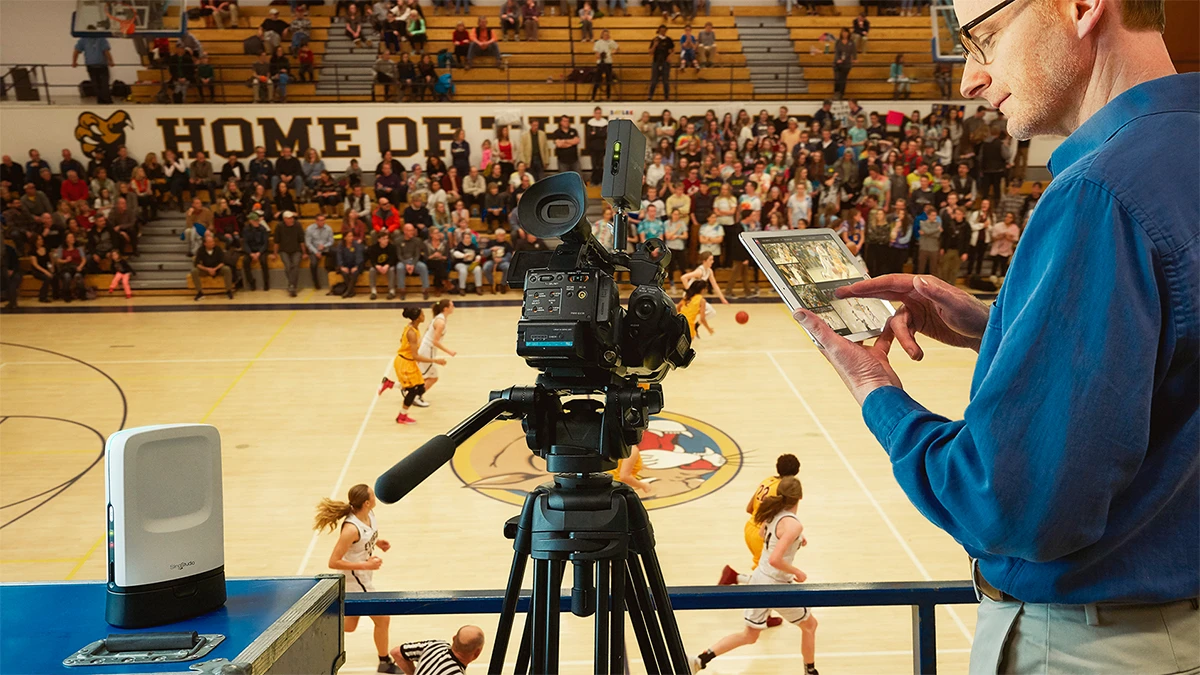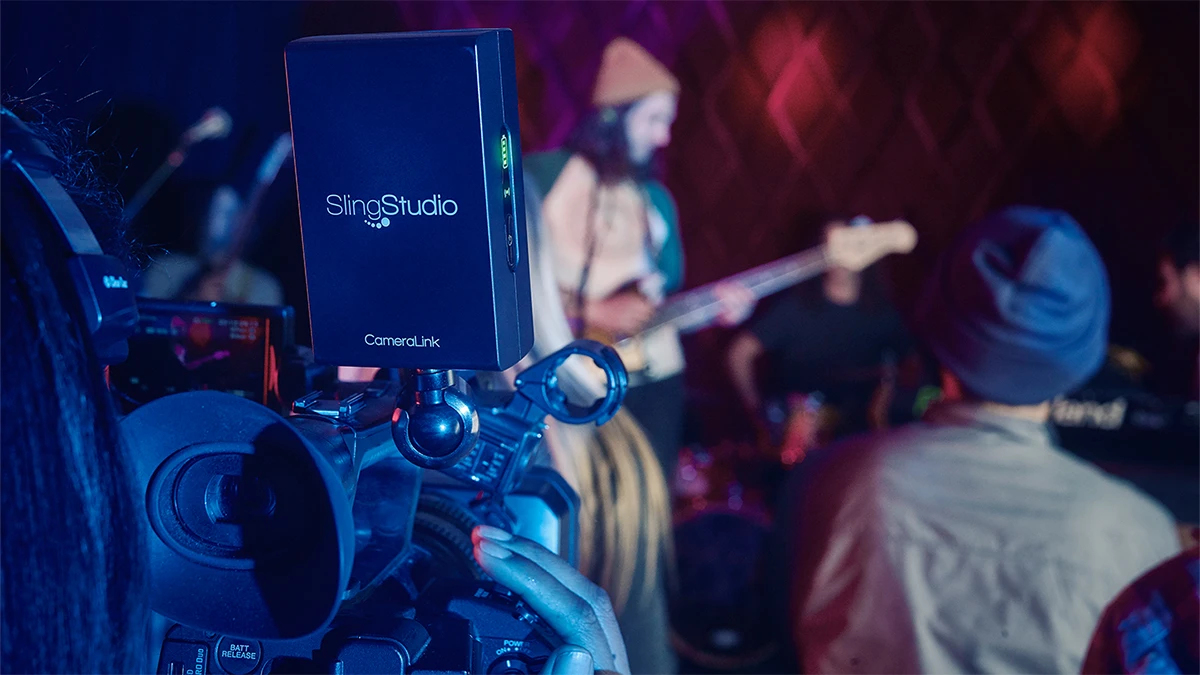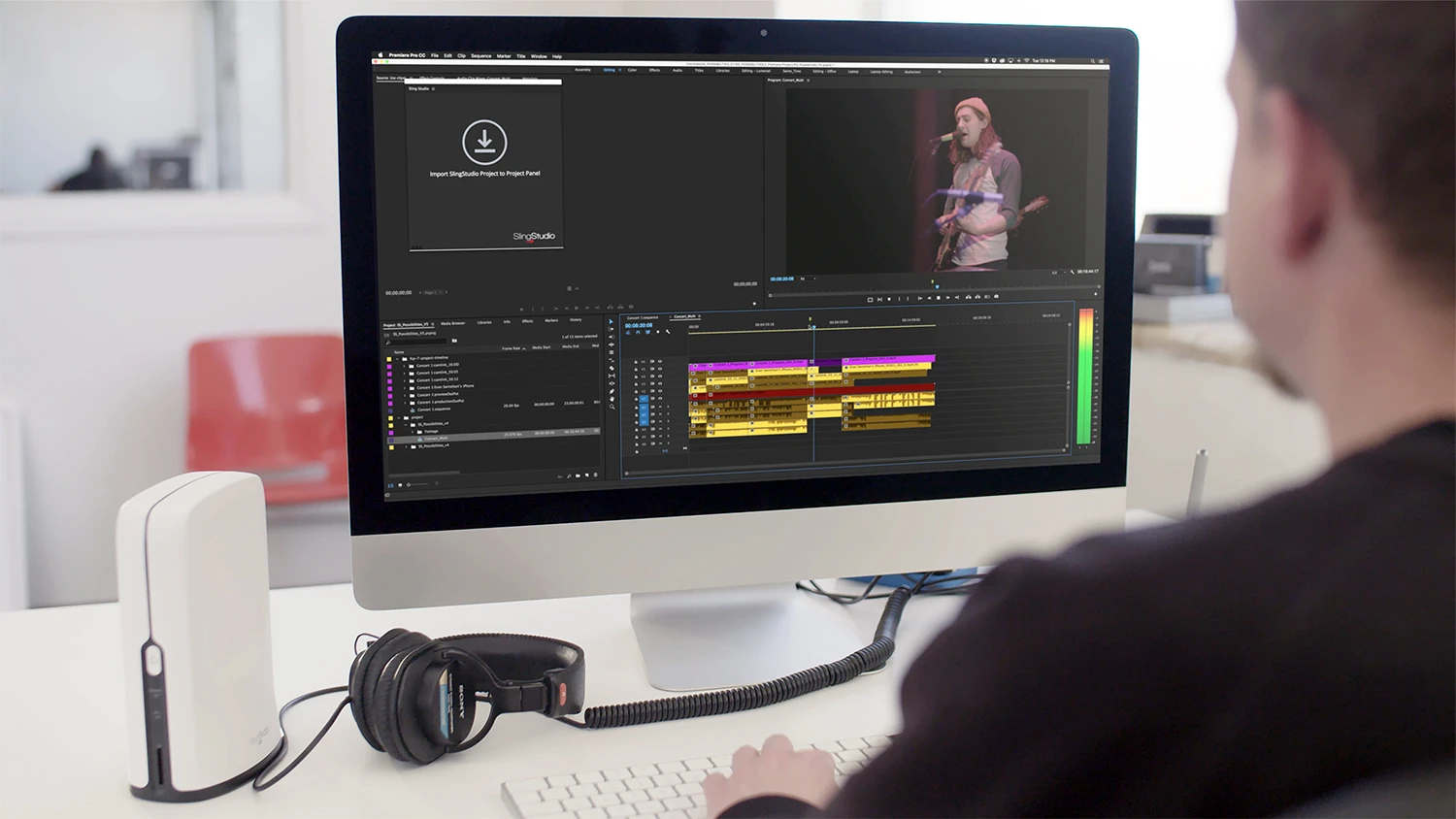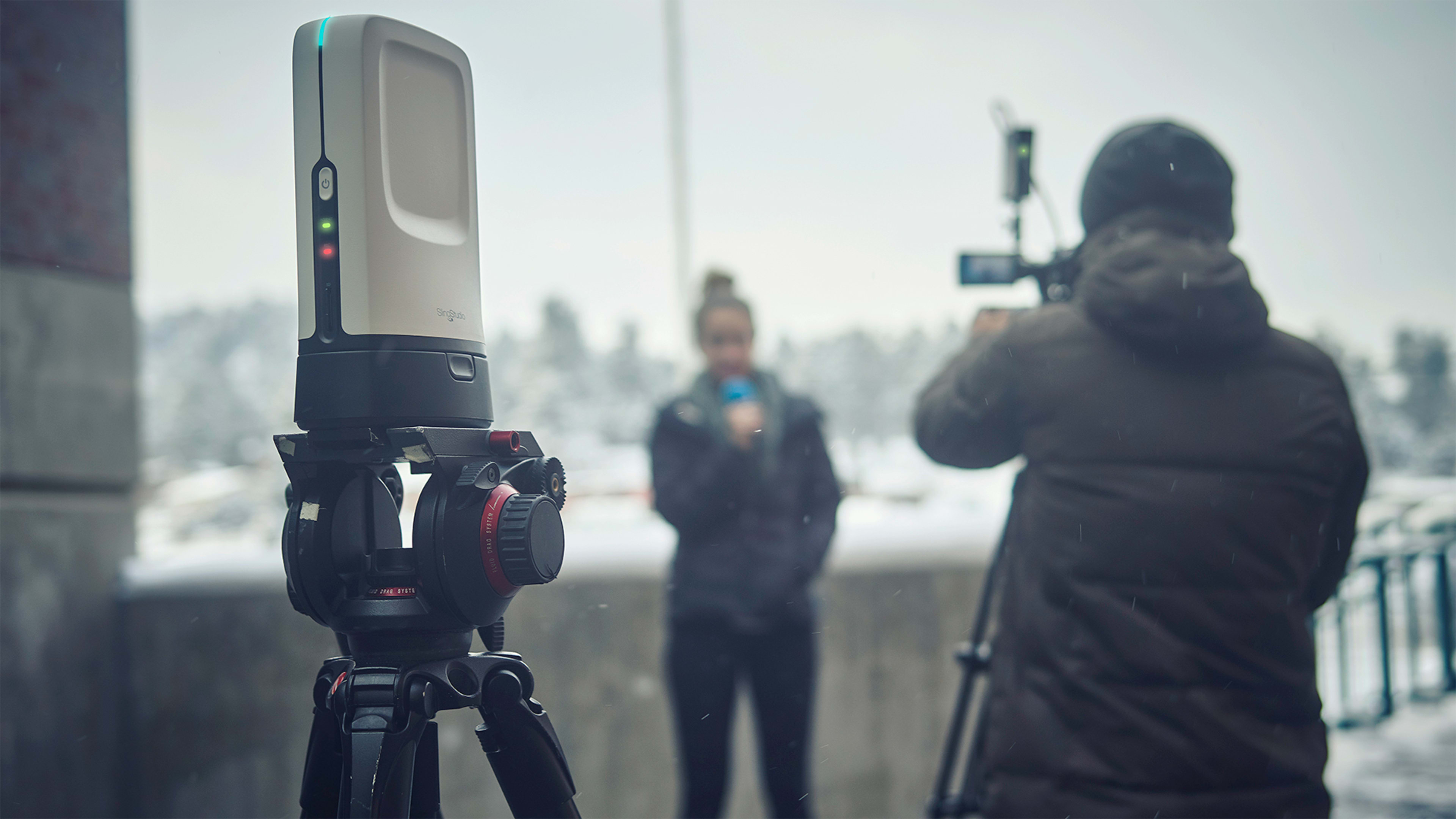For a short period of time, I once wanted to be an event videographer. I was working as a television news producer at the time and saw how much videographers were able charge for weddings and other events. It seemed like a much better use of my film degree—or at least a more profitable one—until I discovered how time-consuming it was to edit video. I remember one wedding (of the five or so I did before calling it quits) where I spent an entire evening desperately trying to sync up the audio between three different cameras, constantly adjusting the video frame by frame until it finally matched up.

All that happened roughly 15 years ago. Camera and video technology has changed a lot since then, and now Sling Media—best known for its Slingbox devices that let you watch your home TV service across the internet—is transforming it a little more with the introduction of SlingStudio, a new system for quickly setting up and editing together multi-camera setups for capturing events such as weddings, school sports, or even a church’s Facebook live stream of a Sunday service. (It begins shipping in May.)
“There’s really nothing in the marketplace today that enables an average consumer . . . to go in and produce multi-camera video very easily,” says Vivek Khemka, CTO at Dish, Sling’s parent, which is also the company behind the Sling TV service.

SlingStudio is a hub for video streams, about the size and weight of your average home cable modem. It supports up to 10 streams at a time that can come from anything from smartphones to professional cameras that cost tens of thousands of dollars. To connect, each standalone camera must output its video stream via HDMI to a small box called a CameraLink that can connect wirelessly to the hub from up to 300 feet away. For Android and iOS devices, there’s a free app to download. Setting everything up is about as easy as connecting your computer to a typical Wi-Fi network.

All these streams can then be pulled up on an iPad—but not an Android tablet for now—using an app that reminds me of the consoles that directors used at that television station I worked at. You can see four streams at a time (cycling in additional ones from the 10 supported) and can just drag and drop favorite shots into a live stream or video recording in real time.
What that means is you could shoot a 10-camera production of your daughter’s soccer game just using other parents’ phones scattered around the stadium as your recording equipment. Since you’re editing on the fly, you don’t have to worry about the time-consuming process of importing all those streams into a video editing program and syncing them up later. You’ll have a polished-looking finished product as soon as that last goal is kicked. You can even live-stream the game to Facebook or YouTube as it’s going on (complete with all your video edits between the 10 cameras) from your iPad and add simple overlays such as a digital scoreboard that allows viewers to keep up with what’s happening.
Another plus: You can pull in a dedicated audio stream, either from an audio mixer’s board or from your own recording device, and use that as the master track for the whole production (a must for wedding videos).

“Anyone that knows how to use an iPad can use this and create great multi-camera video,” Khemka says. For those that want to take things a step further and throw the video into an editing program, the Studio hub can record the four streams you’re focusing on onto an SD card where you can access them later. The version you created live on the fly will also be saved to the SD card, and–unlike my wedding video exploits–all the videos will be automatically synced together, so you don’t have to figure out how to match them up in your editing program. Nervous shooters like myself can also record backups on their camers or phones.

The hub is $999 and needs a power source to operate. If you want to take it out and about, a three-hour battery for the device runs an additional $150. The packs for professional cameras are $355 each. However, adding streams from smartphones using the app is free. Though a SlingStudio setup isn’t cheap, the cost may not sound so steep if you price out how much you’d pay to have a professional do the job.
Recognize your brand’s excellence by applying to this year’s Brands That Matter Awards before the early-rate deadline, May 3.
